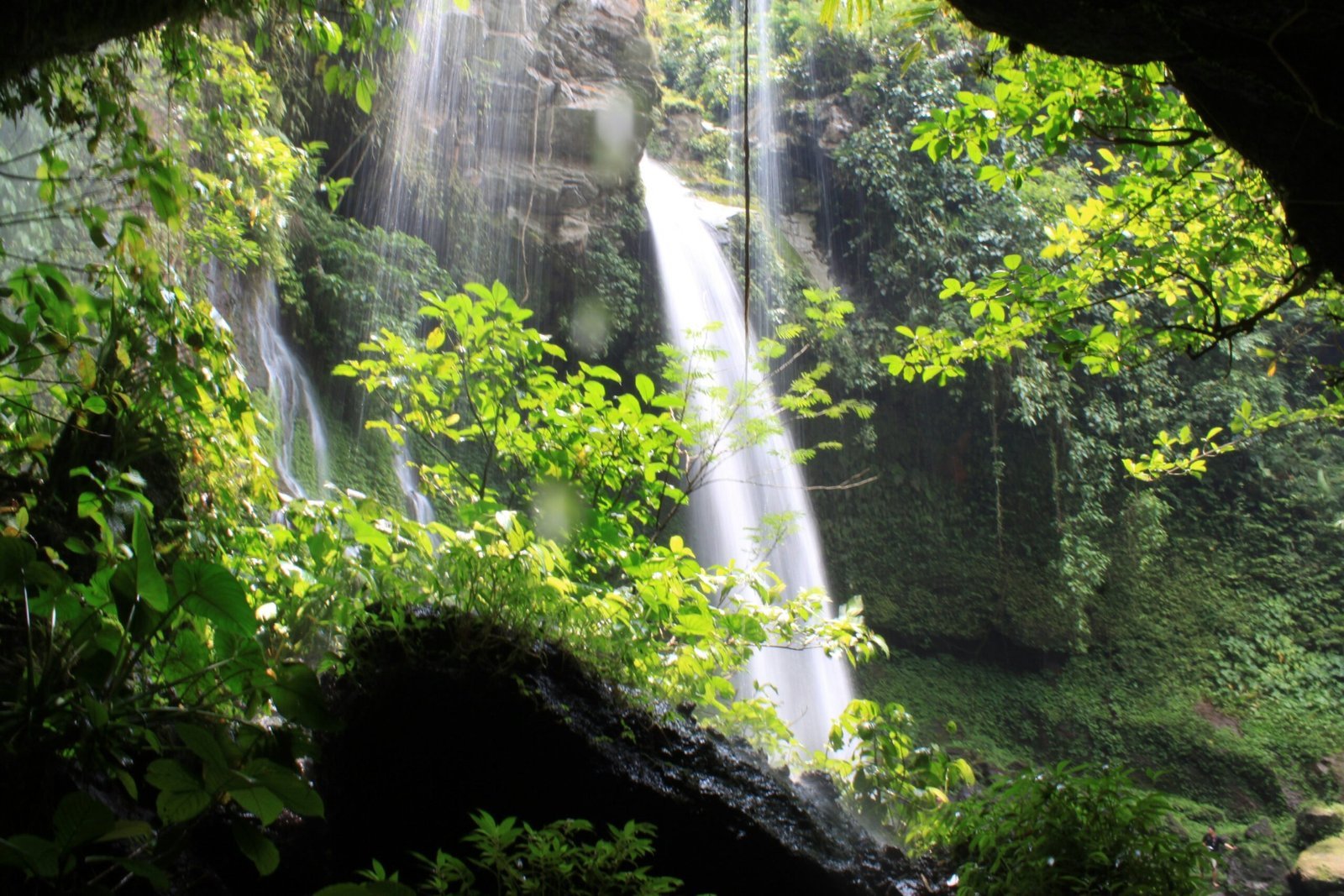
Introduction to Great Smoky Mountains National Park
Great Smoky Mountains National Park is situated on the border of North Carolina and Tennessee, encompassing a sprawling area of over 800 square miles. Established in 1934, it has grown to become the most visited national park in the United States, attracting millions of visitors annually. This park not only serves as a stunning natural landscape but also is a significant cultural landmark, rich in history and heritage. Initially inhabited by Native American tribes, including the Cherokee, the region later became a site for European settlers, whose influence is still evident in the remnants of historical structures dotted throughout the park.
The designation of Great Smoky Mountains National Park as a UNESCO World Heritage Site underscores its ecological and historical significance. This recognition is due to the park’s remarkable biodiversity and its well-preserved ecosystems. The terrain is characterized by its rugged mountains, lush valleys, and numerous waterways, which collectively support a wide variety of habitats. The park boasts over 19,000 documented species of living organisms, including mammals, birds, amphibians, and plants, with estimates suggesting that thousands more remain undiscovered.
Great Smoky Mountains National Park is classified as part of the Southern Appalachian region, which is recognized for its unique ecological characteristics. The temperatures, altitudes, and varying moisture levels contribute to a rich tapestry of life and a variety of growing conditions for flora. The diverse ecosystems range from temperate deciduous forests at lower elevations to subalpine forests at higher altitudes, each hosting distinct biological communities. This remarkable variety highlights the park’s role as a conservatory of biodiversity, essential not only for scientific research but also for the education and enjoyment of the public, enhancing our understanding of nature’s complexities.
Flora: Trees, Flowers, and Unique Plant Species
The Great Smoky Mountains National Park is renowned for its exceptional biodiversity, particularly regarding its flora, which includes an impressive array of trees, flowers, and unique plant species.
One of the most distinctive trees found in the park is the Eastern Hemlock (Tsuga canadensis). This tree is known for its gracefully drooping branches and soft, needle-like leaves. The Eastern Hemlock plays a crucial role in the park’s ecosystem, providing essential habitat for various wildlife species, such as birds and small mammals. Its ability to thrive in the shaded undergrowth of the forest floor underscores the importance of these trees in maintaining the park’s ecological balance.
Another remarkable feature of the park’s flora is the Catawba Rhododendron (Rhododendron catawbiense). Known for its vibrant, funnel-shaped blooms that adorn the mountains in mid-spring, this species draws many visitors each year who seek to admire its striking colors. The Catawba Rhododendron is especially adapted to the area’s climate, flourishing in the acidic soils typical of the Smokies. Additionally, its thick leaves and deep roots help it conserve moisture, an essential adaptation considering the park’s varied climate and seasonal changes.
The wildflower diversity in the park further adds to its charm, with species such as the Yellow Lady’s Slipper Orchid (Cypripedium calceolus) standing out due to its unique appearance and rarity. This orchid is not only a striking visual presence but also critical to the ecosystems it inhabits, as it provides essential nutrients to pollinators. The interplay between these various plant species illustrates the rich tapestry of life within the Great Smoky Mountains National Park, showcasing how flora can both adapt to its environment and contribute to the ecological puzzle. Overall, the flourishing plant life is integral to the park’s health and its numerous ecosystems.
Fauna: Mammals, Birds, and Unique Wildlife
The Great Smoky Mountains National Park is a crucial sanctuary for a diverse array of animal life, making it a focal point for wildlife enthusiasts and researchers alike. Among the most notable mammals in the park is the black bear, a symbol of the wilderness that can be found throughout the mountainous terrain. These bears have adapted to the area’s rich food sources, including acorns and berries, which support their foraging habits. The black bear plays a significant role in seed dispersal, promoting plant diversity in this vital ecosystem.
Another prominent mammal in the Great Smoky Mountains is the white-tailed deer, often seen grazing in the lush undergrowth. Their adaptability to various habitats within the park enables them to thrive in a range of elevations and environments. As herbivores, they significantly impact the vegetation structure, influencing the overall health of the forest ecosystem. Additionally, the elusive bobcat, though less commonly observed, serves as an important predator within the food web, helping to maintain the balance of smaller mammal populations.
The park is not only home to fascinating mammals but also boasts a rich avian population. Among the remarkable birds that reside in the Great Smoky Mountains is the endangered Cerulean Warbler. This small songbird has specialized nesting needs, requiring mature deciduous forests to thrive. Conservation efforts aimed at protecting its habitat are vital to ensure its survival, demonstrating the importance of biodiversity in maintaining the ecological health of the park.
Moreover, the Great Smoky Mountains exhibit an extraordinary diversity of salamanders, often referred to as “the land of the salamanders.” The specific environmental conditions—the cool, moist climate and rich organic soil—have contributed to the high density and variety of these unique amphibians. Studying their ecological roles can provide insights into the health of the park’s ecosystems, underscoring the value of preserving the region’s biodiversity.
Conservation Efforts and Visitor Engagement
Great Smoky Mountains National Park is not only known for its stunning landscapes but also for its extensive conservation efforts aimed at preserving its rich biodiversity. The management of the park actively addresses numerous challenges that threaten its unique flora and fauna. One significant concern is the proliferation of invasive species, which can outcompete native plants and disrupt the ecological balance. To combat this, park officials implement removal programs and restoration projects that encourage the growth of native species, thereby protecting the natural habitat. Additionally, climate change poses a serious threat, altering habitats and affecting species distribution. The park is at the forefront of developing adaptive management strategies to mitigate these impacts, ensuring the survival of the various ecosystems within its boundaries.
Visitor engagement plays a crucial role in the conservation efforts of Great Smoky Mountains National Park. The management encourages visitors to not only appreciate the beauty and biodiversity of the park but also to participate actively in its preservation. Numerous activities allow guests to engage with nature, including hiking on the park’s vast trail system, which offers experiences that range from leisurely walks to challenging backcountry hikes. Such excursions often present opportunities to observe a diverse range of wildlife in their natural habitats, enhancing visitors’ connections to the environment.
The park also offers educational programs designed to inform visitors about the importance of biodiversity and the ongoing conservation initiatives. Through ranger-led talks and workshops, guests can gain insights into the delicate balance of ecosystems and learn how they can contribute to conservation efforts, both during their visit and in their everyday lives. By fostering a sense of stewardship, Great Smoky Mountains National Park not only protects its biodiversity but also inspires visitors to be advocates for environmental conservation long after they leave the park.
